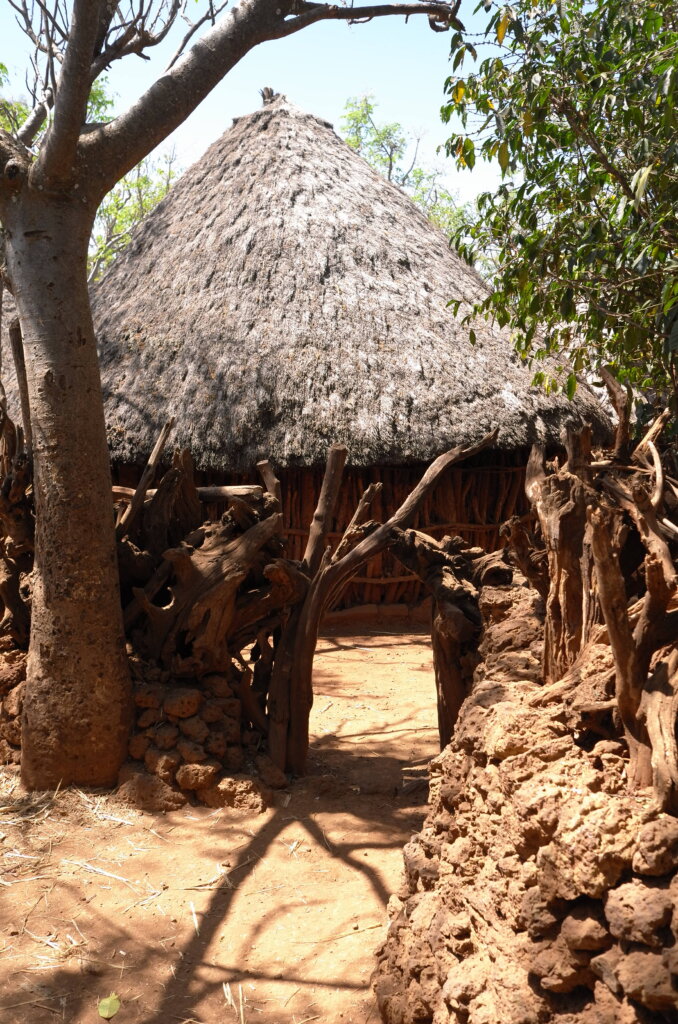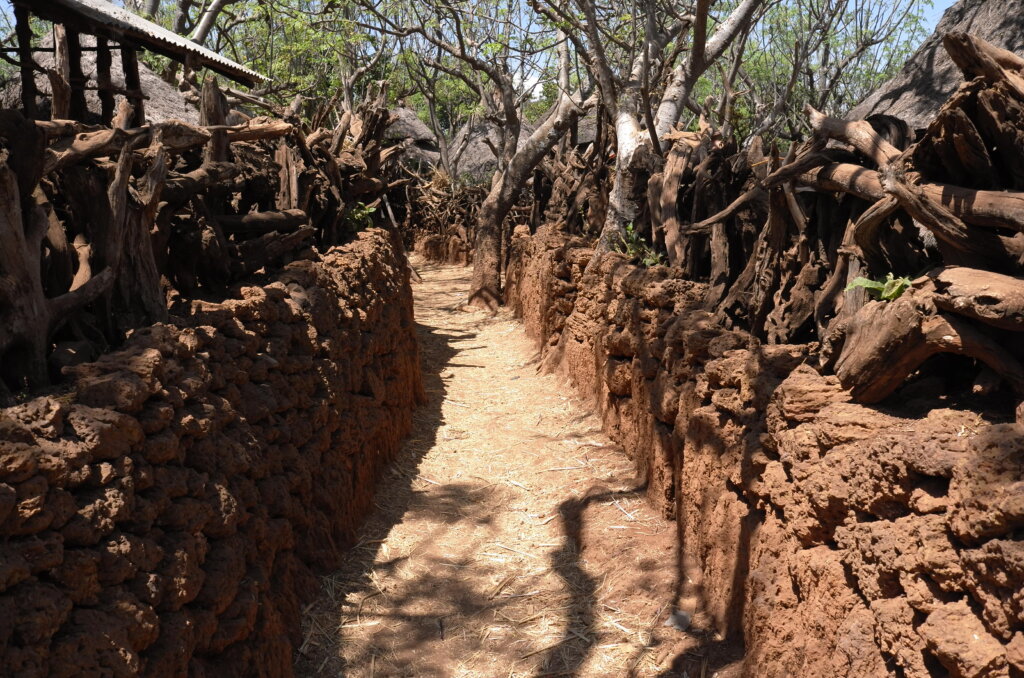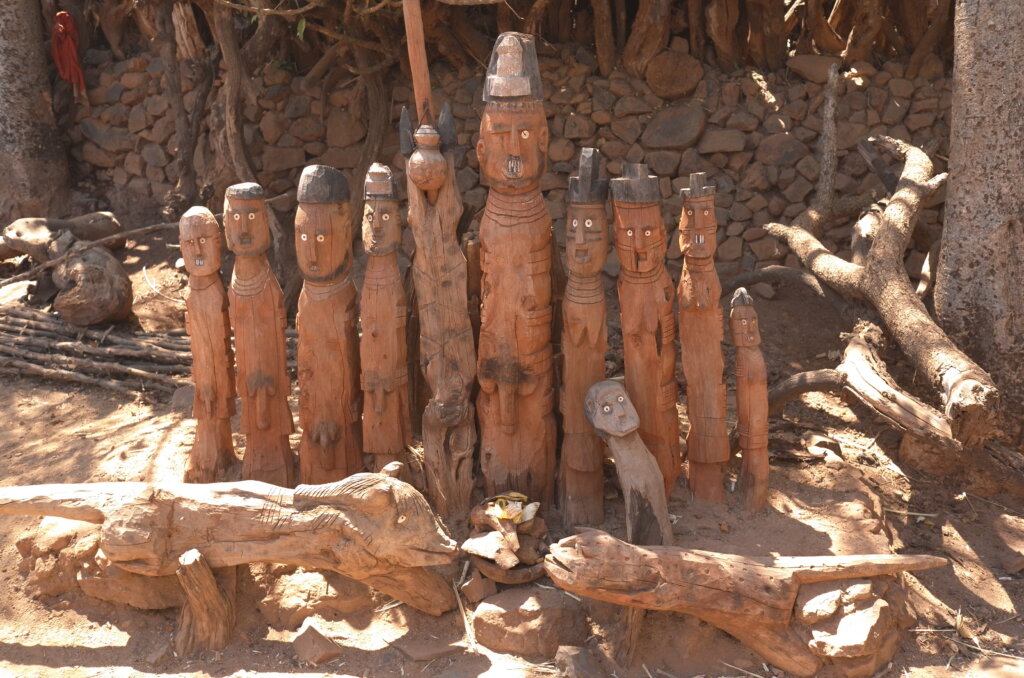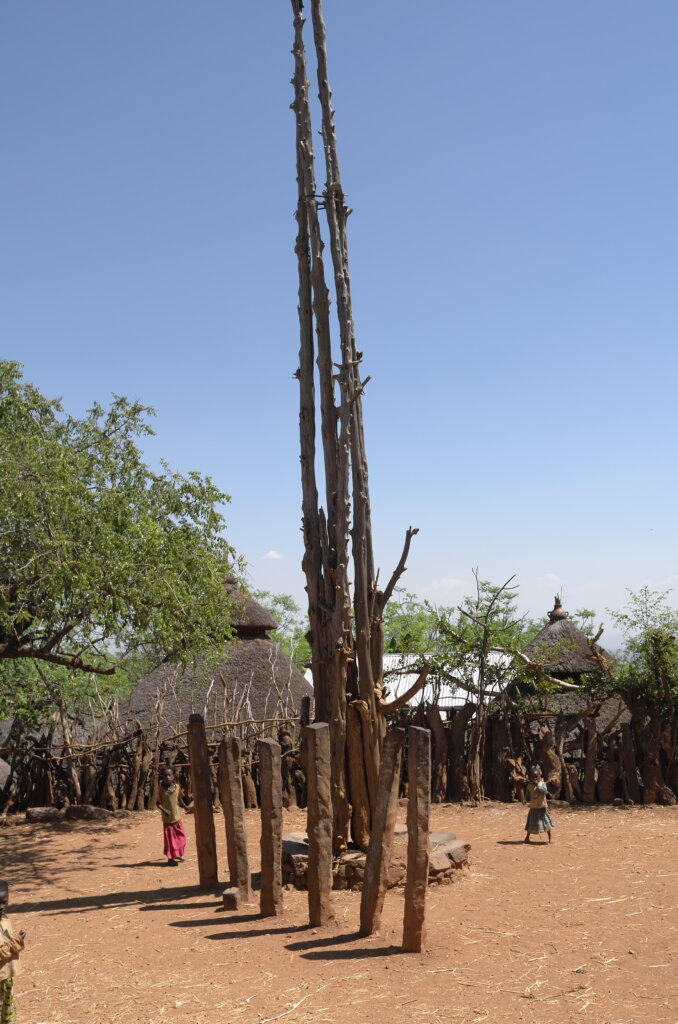The Konso are a martial tribe whose people live in hilltop compounds built like small maze-like fortresses. The Konso settlement we visit is host to 600 households and is surrounded by stone walls covered in thorns. Only four narrow gates allow entry into the compound. Inside the “fortress”, dozens of narrow, winding lanes connect the different family compounds, each one of them with only one very narrow entrance meant to stop enemies from carrying out a frontal attack. The narrow lanes form a real maze meant to confuse invaders and prevent them from escaping once they have entered the village. Additional traps laid out along the lanes trip and ensnare invaders.
Every unmarried male of 12 and above spends the night in a “mora”, a communal house from where he is able to quickly spring to action to repel an invasion – or, more likely these days, put out a fire or help a sick person. Young Konso boys get inducted into a “generation set” every 18 years – and a generational pole, a “kata” is errected to commemorate the event in the village. In Mecheke, the village we visit, there are 38, meaning the village is almost 700 years old.



The Konso use specific grave markers to honour their chiefs and heroes. Traditionally the hero will be represented as the central figure on the grave, endowed with an oversize penis. His wives and children will be lined up on either side of his statue and the enemies he has killed will be displayed in front of him as diminutive statues without a penis (as is the case with many South Omo tribes, Dorze warriors cut off the penis of their victims and keep it as a trophy).


